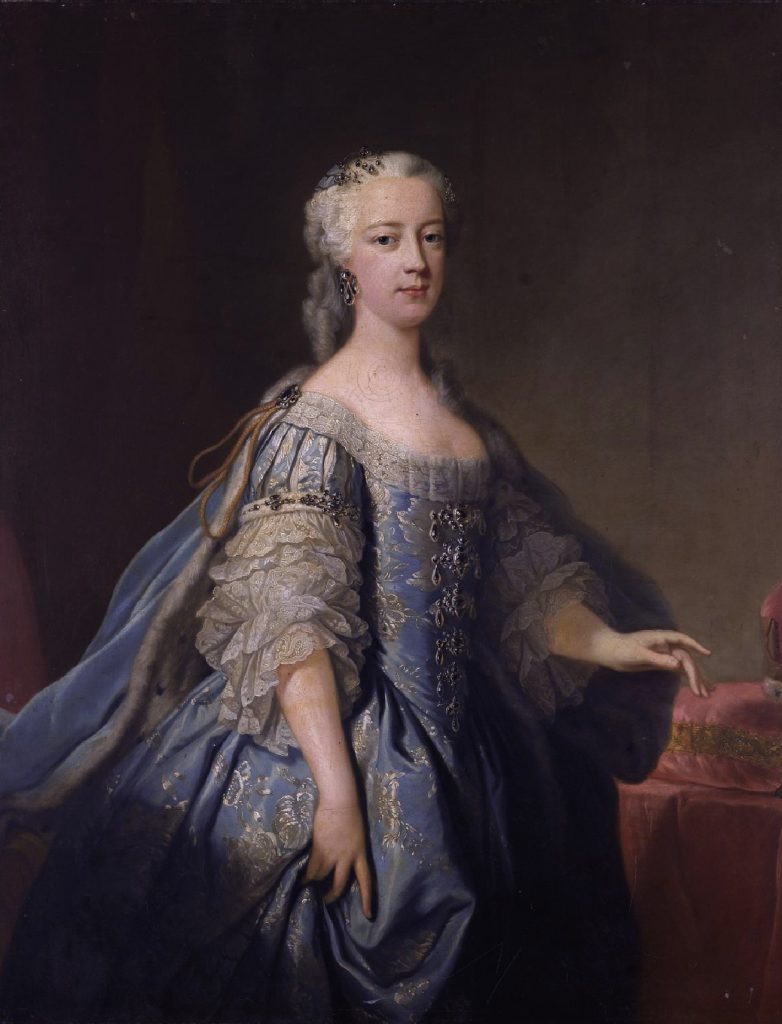The Princess and the Physicians
By Alice Marples, Research Associate, John Rylands Research Institute. She completed her PhD at King’s College London in 2016. Her thesis is entitled ‘Collecting and Correspondence in the Papers of Sir Hans Sloane (1660-1753).
Hidden within some of the early Georgian papers at Windsor Castle is a collection of letters written by the Princess of Wales, Queen Caroline, to her friend and confidante, Charlotte Clayton. The letters were written between 1716 and 1737, and concern Caroline’s daughter, Princess Amelia. There are no dates on these letters, being copied in French and English seemingly by Charlotte Clayton herself. However, in 1952, John Keevil, then Keeper of the Library of the Royal College of Physicians, rearranged them in chronological order according to his reading of the course of Amelia’s long-running illness.
The letters appear to have been written to reassure Caroline that her daughter was receiving the best care, and to provide an outlet for her fears that she was not. Amelia was being attended to by various royal physicians, including Johann Georg Steigertahl and Hans Sloane (the physician, naturalist and collector who was the subject of my research). Through Clayton, though, Caroline was also secretly consulting with her ‘Esculapius’, Dr. John Freind, often acting against the wishes of both royal physicians and her husband. These letters reveal interesting things about the power dynamics within medical consultations, particularly those within the court, and the ways in which patients and practitioners alike had to engage with conflicting networks and bits of advice, and negotiate with one another in order to settle as much as possible on a course agreeable to all.

Princess Amelia of Great Britain (1711-1786), painted by Jean Bapiste van Loo, oil on canvas, c. 1738.
Caroline refused to let Steigertahl (whom she repeatedly called ‘the Butcher’) and Sloane give Amelia emetics or lessen the quantities of kinkana she was taking. In return, they refused to apply various requested blisters and only complied with Caroline’s demands (and Freind’s advice) regarding blood-letting once Caroline had ‘made the Prince speak a little warmly’ to them. Once, when Amelia was particularly suffering with a fever and swelling in her throat, Caroline wrote: ‘Dr Hans & Bussier alltogether blame me & say we have done ill to bleed her. That does not disturb me a moment. I am sure your friend [Freind] is the most capable of any in the world to give advice. What misfortune is it, not to be able with respect to my daughter allways to have his advice follw’d.’ When Steigertahl told the King that he thought repeated bleeding would weaken the Princess, Caroline stated that she believed she could have ‘pull’d his eyes out.’ Such disagreements only increased Caroline’s anxiety and her reliance on Clayton and Freind’s advice. She promised in the fourth letter: ‘I will make them put down in writing the course of the medicines that they would give her & then I will send it to your friend to put down his method, & they shall be given accordingly to his directions.’ In the next letter, Caroline wrote: ‘I have suspended every thing till you my dear friend have spoke with our Esculapius. If He approves of this or any thing else that He thinks proper, I beg you to send before Six for the physicians or rather the executioners will be there then, therefore dont come my dear Clayton.’
Despite such clashes in medical authority and patronage, though, Sloane’s archive at the British Library reveals something of a ceasefire between the three Royal Society physicians and the Royal family. All three continued to serve as royal physicians: in April 1723, Steigertahl wrote to Sloane, informing him that Amelia was to visit the waters at Bath under the direction of Dr Freind. Indeed, when Freind died in 1728, Steigertahl wrote touchingly of his loss. Sloane, meanwhile, was forced to write to Friend’s brother to try and regain the various medical books he had loaned him over the years.
